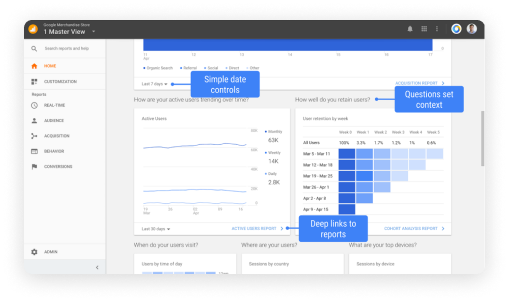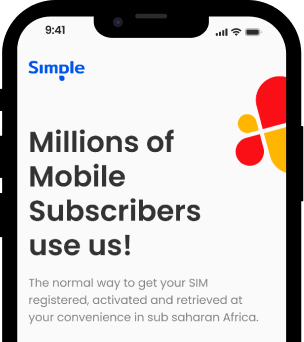Choosing the right development partner can make or break your digital project. Whether you’re building a mobile app, website, or custom software, your development partner is more than just a service provider—they’re a strategic collaborator in your business journey.
Unfortunately, many businesses dive into partnerships without proper evaluation. The result? Missed deadlines, budget overruns, and subpar product quality.
To help you avoid these pitfalls, we’ve compiled a step-by-step guide with expert-backed advice on how to find a trustworthy, future-ready development partner.
Step 1: Get Clear on What You Really Need
Before you approach any development company, take time to define your project clearly. Ambiguity can lead to confusion, delays, and spiraling costs.
Ask yourself:
- What’s the main problem my product solves?
- Who are the target users?
- What platforms will it support—web, iOS, Android?
- What features are essential vs. nice-to-have?
- What is my timeline and budget?
Pro Tip: Even a basic one-pager or sketch can significantly improve your partner’s understanding and speed up estimation.
Step 2: Look for Relevant Experience
Not all development agencies have the same background. Many teams may be great at what they do—but not every one of them is right for your business domain.
You should check for:
- Past projects in your industry
- Familiarity with your preferred tech stack
- A portfolio that aligns with your needs
For example, a team skilled in building SaaS platforms may not be the best fit for a hardware-integrated IoT project.
Pro Tip: Explore platforms like TopDevelopers.co to find agencies with verified industry experience and real client feedback.
Step 3: Evaluate Communication Style and Project Management
Even the most talented team can fail without good communication. To avoid surprises, ensure the partner has a structured way to keep you updated.
Ask them:
- How often will we meet or communicate?
- What tools do you use (e.g., Slack, Trello, Jira)?
- Who will be my main point of contact?
Red Flag: If they don’t proactively ask questions about your business or goals, it’s a sign they may just follow orders—not collaborate.
Step 4: Test for Cultural Fit and Team Chemistry
A productive partnership goes beyond technical fit. You should feel comfortable discussing feedback and ideas openly with your team.
Consider:
- Do they listen, or do they dominate the conversation?
- Are they flexible with feedback?
- Is their working style compatible with yours?
Try to gauge not just professionalism, but also enthusiasm for your product.
Pro Tip: Consider a 2-week trial phase or a small paid discovery sprint before committing long-term.
Step 5: Review Their Process, Security Measures & QA Approach
A high-quality development team should have clearly defined processes for everything—from coding standards to security practices.
Ask questions like:
- What is your development methodology—Agile, Scrum, or Waterfall?
- How do you manage code quality and version control?
- How is testing handled: manual, automated, or both?
- What security protocols do you follow?
Red Flag: Vague answers like “we’ll handle it later” often lead to last-minute chaos and instability.
Step 6: Plan for the Long Run — Ask About Support and Scaling
The journey doesn’t end at launch. You’ll need bug fixes, performance monitoring, and possibly, more features.
Check if they offer:
- Maintenance packages
- Scalability planning
- Ongoing performance audits or optimization
Pro Tip: Ask how they’ve supported clients over a 6–12 month period. Their answer will tell you a lot about long-term reliability.
Step 7: Read Reviews and Speak to References
Don’t skip this step. Genuine feedback from past clients is one of the most reliable ways to evaluate a development partner.
Where to look:
- Clutch
- TopDevelopers.co
- Google Reviews
- LinkedIn testimonials
Ask the client:
- Was the team reliable and responsive?
- Did they meet deadlines and budgets?
- Would you work with them again?
Step 8: Understand the Pricing Model and Contract Terms
Before signing anything, be sure you understand what you’re paying for—and what you’re not.
Clarify:
- Is this a fixed-price, hourly, or milestone-based contract?
- What’s included in the quote—design, QA, project management?
- Who owns the code and IP?
- What are the payment milestones?
Red Flag: Avoid companies that are unwilling to put clear terms in writing or promise everything without details.
Step 9: Watch for Red Flags Early
Your gut feeling matters. If something feels off during your initial calls, trust that instinct.
Common red flags:
- Unrealistic delivery timelines
- Overpromising and underquoting
- Lack of structured onboarding
- No discovery phase or strategic input
Final 10-Point Checklist Before You Choose
Here’s a quick summary to guide your final decision:
- Clear understanding of your project
- Proven experience in your industry
- Strong technical skill set
- Transparent communication flow
- Security and QA baked into the process
- Scalable and long-term support offerings
- Solid client reviews and references
- Flexible collaboration and feedback loop
- Well-documented proposal and contract
- A genuine passion for your success
Conclusion
Choosing a web development partner isn’t just about code. It’s about collaboration, trust, and shared success.
At Shark Matrix, we specialize in delivering high-impact digital solutions for startups, enterprises, and government projects. From custom websites to scalable apps and complex backend systems, we’ve built a reputation as Dubai’s trusted web development company.
We don’t just build what you ask for—we help you build what your business truly needs.
Ready to turn your vision into reality? Let’s talk.









 OpenAI
OpenAI
 Codex
Codex
 Vertex AI
Vertex AI
 Cloud Vision
Cloud Vision
 OpenCV
OpenCV
 TensorFlow
TensorFlow
 IBM Watson
IBM Watson
 Cloud Natural Language
Cloud Natural Language
 Cognitive Services
Cognitive Services
 Bot Framework
Bot Framework
 Mistral
Mistral
 LLama
LLama
 Gemini
Gemini
 Anthropic
Anthropic
 N8N
N8N








































